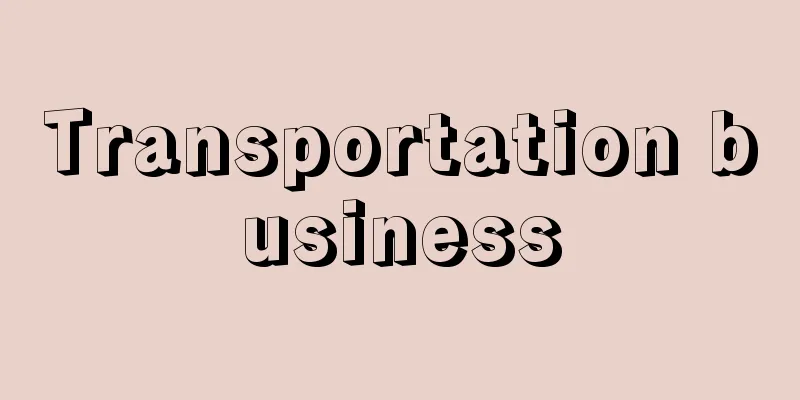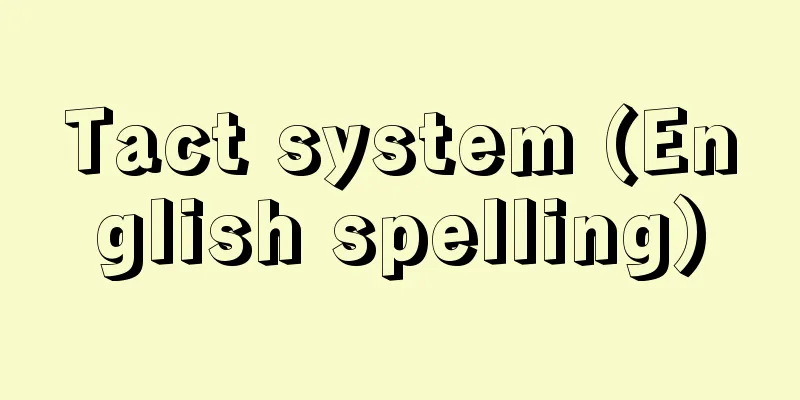Transportation business

|
A business that performs various tasks (especially terminal work) related to transportation using railways (including tracks and JR lines) between railways and shippers. Article 2 of the Transportation Business Law (Law No. 241 of 1949) classifies the types of business into five categories: (1) intermediation and receipt from railways when goods are transported by railway under one's name, (2) consignment to and receipt from railways when goods are transported by railway under the name of another person, (3) collection and delivery of goods transported by railway, (4) loading and unloading onto railway cars, and (5) business as a carrier using railways. From the perspective of public interest, a licensing system has been adopted, and any revision of fares and charges requires the approval of the Minister of Transport. Licenses are issued for the handling stations and the above five types of types, and there are limited licenses that are limited to shippers and handled goods, and general licenses that are not limited. In addition, those who have obtained licenses for area trucking, route trucking, and specific freight transport business are also considered to have obtained the third type of license out of the five types mentioned above, the freight collection and delivery transportation license. Because of its close relationship with the railway, due to the recent decline in JR freight transport volume, there has been a noticeable inclination toward other dual-business sectors such as automobile transport handling business (a business in which the railway transport business has been replaced by truck transport business) and area trucking. Source: Encyclopaedia Britannica Concise Encyclopedia About Encyclopaedia Britannica Concise Encyclopedia Information |
|
鉄道 (軌道および JR航路を含む) を利用しての運送にかかわる各種作業 (特に端末作業など) を,鉄道と荷主の間に立って行う事業。通運事業法 (昭和 24年法律 241号) 第2条ではその種類を,(1) 自己の名によって鉄道による物品運送を行う場合の取次ぎおよび鉄道からの受取り,(2) 他人の名によって鉄道による物品輸送が行われる場合の鉄道への託送および受取り,(3) 鉄道により運送される物品の集貨・配達,(4) 鉄道車両への積込み・取卸し,(5) 鉄道を用いての利用運送人としての業務,の5つに分類している。公益性の観点から免許制度がとられており,運賃・料金改定については運輸大臣の認可を必要とする。免許は取扱駅および上記5種類の種別について行われ,また荷主や取扱貨物などの制限された限定免許と,限定しない一般免許とがある。また区域トラック,路線トラック,特定貨物運送事業の免許を受けたものは,同時に上記5種類の免許のうち第3番目の集貨・配送通運免許を受けたものとみなされる。鉄道と密接な関係をもつため,近年の JR貨物輸送量の減退により自動車運送取扱事業 (通運の鉄道をトラック運送事業に置き換えた形の事業) ,区域トラックなど他の兼業部門への傾斜が目立っている。
出典 ブリタニカ国際大百科事典 小項目事典ブリタニカ国際大百科事典 小項目事典について 情報 |
Recommend
SSK - SS K
...In 1926, "Spring Dance" became popul...
Shinobu
[1] Former name of a district in Fukushima Prefect...
Anpei
...Various ingredients are added to this base to ...
Hakone crafts - Hakonezaiku
This refers to wooden crafts such as marquetry, w...
Hedera rhombea (English spelling) Hederarhombea
…[Hiroshi Aramata]. … *Some of the terminology th...
Ise Castle
This area occupies the central part of the Nara B...
glutamic oxaloacetic transaminase
...The serum concentrations of bile acids and cho...
Co-precipitation
…When a precipitate forms, other substances that ...
The Three Great Masterpieces of Kabuki
... Ningyo joruri. Historical piece. Five acts. A...
Magnetic double layer - Jikinijyuusou (English spelling) magnetic double layer
As shown in the figure, a thin layer has equal amo...
morality play
…It is also translated as a moral drama. It is a ...
Subei Irrigation Canal (English: Subei Irrigation Canal)
An artificial channel in northern Jiangsu Province...
Silver Chair - Silver Chair
The story begins with the first episode, The Lion...
Medical treatment benefits - Ryoyo no Kyūfu
When a public health insurance policyholder or the...
Obasunoki - Obasunoki
...The fruit is spherical, 7 mm in diameter, and ...









